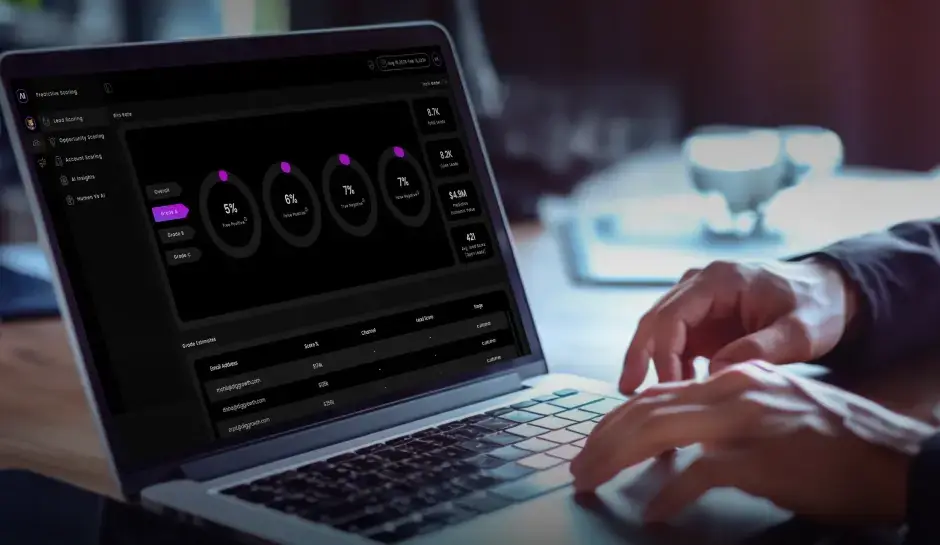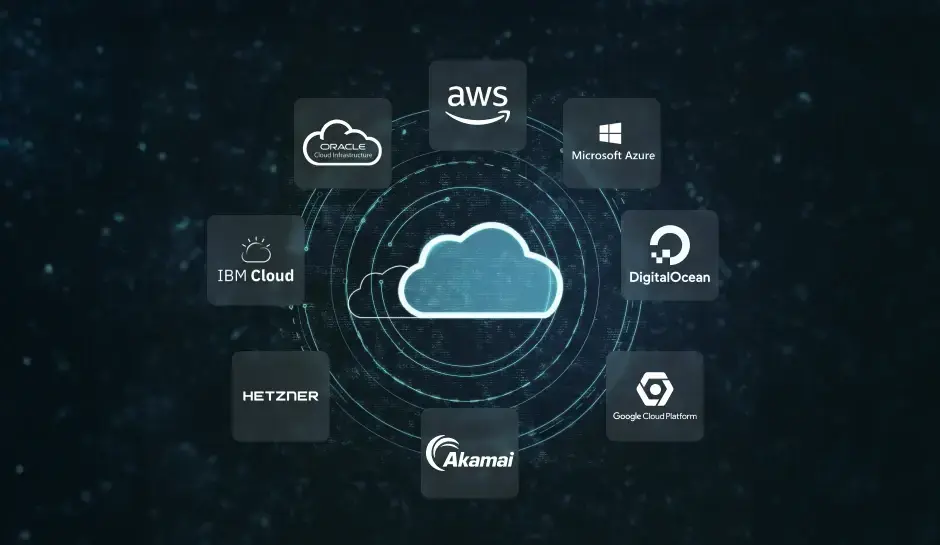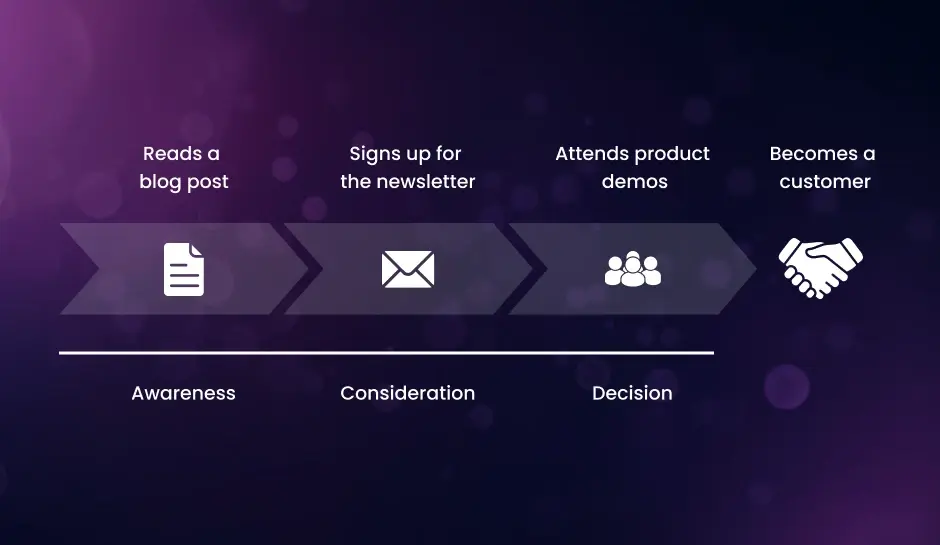
A Cookieless Future : What Does It Mean for Marketers in 2024?
Google’s announcement that it will stop supporting third-party cookies by the end of 2024 has many marketers worried. In this blog post, we talk about what a cookieless world actually means for marketers and how they can rethink cookies.
There’s enough talk of a Cookieless Future–the privacy it will provide internet users with and the challenges it will pose to marketers. Most marketers don’t sound too thrilled about losing these little bits of coded trackers that provided them with certain types of data about users. To lamenting marketers, it can feel like a big loss as if this is a nightmare on sesame street, but we must understand that we are more than just cookie monsters. Those marketers that understand data aren’t as upset. Fearless marketers see the whole picture and are unfettered and undeterred by the loss of cookies.
Here’s what fearless marketers are going to do:
Rethink Data Reliance
Prepare for sustained disruption. Smart marketers know that the paradigm shift that needs to happen takes some time. In any process that is heavily reliant on third-party data, there will be hiccups and struggles when the cookies go away.
No matter how seamless the transition is, the whole system is disrupted by any change and marketers would be wise to foresee this and prepare for it by gradually weaning their systems off their reliance on cookies.
Determine your reliance on third-party cookies and find alternatives. If your business uses cookies as a data source, it is time to determine exactly how much it relied on cookies, in order to seek viable alternatives in their imminent absence. What kinds of data were cookies giving you, and where else can you get it?
- Location
- Sale and Purchase
- Context and Preferences
- Feedback and Psychographics
Cookies have been a major source of location data, but they’re not the only sources of this information. Location data is collected by tech giants like Google and Facebook and can be sourced by allocating data capabilities to them.
For the purpose of targeted ads, data from cookies was instrumental. So in order to predict needs, marketers can use first-party data through collaborations for predictive modeling. These partnerships can be across brands and even industries, so as to replace third-party data with second-party data through data sharing. This data can also be collected directly from consumers and test groups through surveys.
Targeted ads from brands like to know what their consumers want and prefer, but third-party cookies sought maximum information without context as they were catering to a set of diverse industries. You only need to know who wants your product, and the way to find out is through contextual advertising and publisher targeting where your ads would only be placed on pages that would be visited by someone who needs or prefers your product. Second-party data partnerships would facilitate contextual advertising through ecosystem partnerships like one between a diaper brand and a baby oil brand, both of whom would want to target the same consumers, so would benefit from data sharing. They could host each other’s ads and also share data at the back end.
If you wanted to read your consumers’ minds, cookies were as helpful as a therapist leaking secrets. But an even better way perhaps is to ask the consumer directly! Build trust and ask for feedback. First-party data from direct consumer feedback will be the most reliable source of insight into the minds of your audience.
New Data Infrastructure
Within your organization, you may need new data infrastructure. Simplify the system. You are now the data collectors, so you need to organize it efficiently.
- People
- Processes:
- Technology:
A team focused on data Analysis and management led by a data relationship manager must be able to communicate the data privacy measures your company is taking to build trust and ensure that the data is clean and honest.
While your data must be organized, it cannot be in silos. The essence of data sharing and data-partnerships is that data is more useful when it is shared. Communication is essential in a Cookieless Future, so make sure data flows freely through your teams to enhance context. Rethink analytics & ad measurement practices, moving from individuals to cohorts through smarter grouping and targeting practices.
The solution to cookieless data management within your organization is an efficient Consumer Data Platform (CDP), where all the information on a consumer–from how they found you, to their service feedback, from different departments–is stored in one place, building context and eventually a rich data repository. Now that your websites won’t track traffic the same way, use a single domain name to funnel all your traffic in one place and develop your web pages in a way that you can capture people-based durable identifiers. The identifiers, along with the CDP, should be able to facilitate predictive analytics.
Think About Your Consumers
Fearless marketers see the Cookieless Future as a unique opportunity to respect their consumer and ask them for their data, earning their trust. Marketers now know better than to track consumers secretly and pop an ad up after eavesdropping on a private conversation that merely mentioned a word. They know better than to be creepy. They understand the value of trust and are almost glad to be rid of the privacy threat.
Though cookies were threatening privacy, how do we replicate their delicious convenience? Some people are making it sound like this is the end of data collection and mining, but this is only the beginning! What is ending is only third party cookies- the ones consumers don’t trust- not such a big loss, eh?
But data collection is a vast and generous playing field with enough for everyone and everything for the fearless. All the data cookies were providing us with is still available through other avenues, and without the isolated decontextualized narrow understanding of variables that cookies provided with their silos and lack of correlation.
The problems of third party cookies are leaving along with them and we are free to develop a new paradigm of holistic information with context and make marketing more humanized even with automation. The sensitivity of correlation is born out of the context provided in voluntary data.
- Create consumer trust with compelling consumer experiences
- Get a good DRM system
- Create value through personalization
- Follow privacy regulations and tell consumers through data dialogue
- Enable a better platform for consumer control of their data by investing in “Privacy by Design” with a data security center
- Just Ask!- Data invitation
- Give something in return, be it greater access, an ebook, or a discount. Why should they give you their data? There must be a worthy data value proposition.
Understanding Cookies
In the world of digital advertising and tracking, cookies play a crucial role. They are small pieces of text stored on a user’s device when they visit a website. Cookies serve various purposes, enabling websites to remember user preferences, provide personalized experiences, and track their online activities.
What are Cookies?
Cookies can be thought of as digital identification cards. When a user visits a website for the first time, a cookie is created and stored on their device. This cookie contains information such as the user’s preferences, login status, and browsing history on that particular website.
These cookies are sent back to the website each time the user revisits it. This allows the website to recognize the user and personalize their experience based on their previous interactions. For example, a shopping website can remember the items in a user’s cart even if they navigate away from the website and come back at a later time.
How do Cookies Work?
Now, you might be wondering how exactly cookies work. When a user visits a website, the website’s server sends a cookie to the user’s device, which then stores it. The next time the user visits the same website, their device sends the stored cookie back to the server.
These cookies contain information that helps the website recognize the user and their preferences. This allows the website to offer a more personalized experience, such as displaying relevant ads or remembering the user’s language preference.
Pro Tip- You can continue thriving in the cookieless future through first-party data collection. Moreover, you can establish individual customer relationships and offer viable data-sharing incentives to keep accessing reliable data.
Limitations and Concerns
Despite their usefulness, cookies have limitations and raise concerns regarding user privacy. One limitation is that cookies can only collect data from the specific website that created them. They cannot track a user’s activities across different websites or devices.
Furthermore, users have expressed concerns about their online privacy and the amount of data collected through cookies. Advertisers and marketers often rely on cookies to track user behavior and deliver targeted ads. While this benefits advertisers and enhances user experiences, it also raises questions about the extent of data collection and potential privacy violations.
As a result, there has been a growing shift towards a Cookieless Future, where alternative methods are being explored to address these concerns and ensure greater privacy and control for users.
The Shift Towards a Cookieless World
In recent years, the digital landscape has been witnessing a significant shift away from the traditional use of cookies for advertising and tracking purposes. The impact of cookieless world has been driven by various factors, including:
Factors driving the shift away from cookies
The increasing focus on privacy concerns, stricter data regulations, and evolving user preferences are some of the key drivers pushing the industry towards abandoning cookie-based practices.
Role of privacy concerns, data regulations, and user preferences in this transition
Privacy concerns have gained prominence in recent years, with users becoming more aware of how their personal information is being collected, stored, and used by online platforms.
Additionally, governments and regulatory bodies have introduced stricter data protection laws, such as the General Data Protection Regulation (GDPR) and the California Consumer Privacy Act (CCPA), to safeguard user privacy and control the usage of personal data. These regulations have imposed limitations on the use of cookies, forcing businesses to explore alternative solutions.
Moreover, user preferences have shifted towards more personalized and relevant content, while simultaneously demanding greater transparency and control over their data. This shift has prompted businesses to re-evaluate their tracking methods and find alternative ways to deliver personalized experiences without relying solely on cookies.
Key Takeaways
- Businesses must be prepared for a cookieless future by adopting a distinct approach.
- Adopting a first-party data collection approach will help you sustain the upcoming prospects.
- Acquiring more personalized AI-driven user-centric marketing models as ethical data practices will prove effective in the long run.
Implications and benefits of a cookieless world for consumers, advertisers, and businesses
- Consumers
- Advertisers
- Businesses
A Cookieless Future offers enhanced privacy protection, reducing the risk of personal data being mishandled or misused. It allows users to have more control over their online experiences and the advertisements they encounter.
While the shift towards a Cookieless Future presents challenges, it also opens up new opportunities for advertisers to explore innovative targeting and tracking methods that are more privacy-conscious. Advertisers can gain valuable insights from alternative data sources and provide personalized experiences based on user consent, thus improving the overall advertising effectiveness.
Embracing a cookieless world allows businesses to prioritize privacy, build trust with their customers, and comply with evolving data regulations. It encourages the adoption of advanced technologies and techniques that can deliver targeted content without compromising user privacy. By adopting alternative advertising and tracking methods, businesses can stay ahead in the changing digital landscape and maintain a competitive edge.
Alternatives to Cookie-based Advertising and Tracking
As the era of cookie-based advertising and tracking comes to an end, marketers and advertisers are exploring various methods and technologies that will replace cookies. These alternatives open up new opportunities for targeting and tracking without compromising user privacy.
- Introduction to First-Party Data
- Contextual Advertising
In a Cookieless Future, first-party data plays a significant role. It refers to the data collected directly from users who willingly provide it to a website or company. First-party data includes information such as demographics, browsing behavior, and purchase history. With user consent and proper cookieless data management, companies can use this data to deliver personalized experiences and targeted advertisements without relying on third-party cookies.
Another alternative approach to behavioral targeting in a Cookieless Future is contextual advertising. Contextual advertising involves displaying ads that are relevant to the content and context of a webpage. By analyzing the keywords and topics on a page, advertisers can serve ads that align with the user’s current interests or needs. This method eliminates the need for tracking cookies and instead focuses on delivering relevant content based on the immediate context.
By exploring these alternatives, marketers can adapt to a Cookieless Future and continue to reach their target audience effectively.
Adapting Marketing Campaigns in a Cookieless World
In a cookieless world, marketers and advertisers need to adjust their campaigns to ensure effective targeting and reach the right audience without relying on cookies. This shift presents an opportunity to explore new strategies and techniques that prioritize user privacy while still delivering impactful advertising.
Strategies for Marketers and Advertisers
- Leverage first-party data
- Utilize alternative targeting techniques
- Implement consent-based marketing
Instead of relying on third-party cookies, marketers can tap into the data collected directly from their own websites or apps. This valuable first-party data provides insights into user behavior and preferences, allowing for more accurate targeting.
Without cookies, marketers can explore alternative methods for audience targeting. These techniques could include contextual advertising, where ads are displayed based on the content of the webpage, or inferred targeting using data points like IP address or location.
With privacy regulations becoming stricter, obtaining user consent is crucial. Marketers should prioritize obtaining explicit consent for data collection and ensure transparency in their data practices. This way, they can build trust with their audience and deliver more personalized experiences.
Importance of Utilizing First-Party Data
First-party data has always been valuable, but in a Cookieless Future, its significance grows even more. By leveraging the data collected directly from their own platforms, marketers gain a deeper understanding of their audience’s preferences, interests, and behavior. This allows for more accurate targeting and personalized messaging, driving higher engagement and conversion rates.
Maintaining Effective Ad Targeting without Cookies
While cookies have been a reliable tool for ad targeting, their absence doesn’t mean marketers can’t reach the right audience effectively. By combining first-party data with alternative targeting techniques, such as contextual advertising or inferred targeting, marketers can still deliver relevant ads to their desired audience. The key is to adapt and explore innovative approaches that prioritize user privacy while still achieving marketing objectives.
Impact on Users and Consumers
As we move towards a Cookieless Future, there will be significant implications for users and consumers. Let’s explore how this shift will affect user experience and discuss the benefits and drawbacks in terms of privacy, relevancy, and ad frequency.
Shift to a Cookieless Future: User Experience
The cookieless world will have a direct impact on user experience. With the absence of cookies, targeted advertising may become less personalized. Currently, cookies enable websites to remember user preferences and deliver tailored content and ads. However, without cookies, users may encounter more generic advertising.
Benefits and Drawbacks for Users
- Privacy
- Relevancy
- Ad Frequency
One of the primary benefits for users in a cookieless world is enhanced privacy. Cookies are often used to track user behavior across the web, collecting vast amounts of personal information. By eliminating cookies, users have more control over their data and are less susceptible to privacy breaches.
While personalized ads may become less prevalent, users may also experience a decrease in irrelevant advertising. By relying on alternative methods such as contextual targeting or cohort targeting, advertisers may deliver ads that are more aligned with users’ interests.
Without cookies, users may see a reduction in ad frequency. Cookies often facilitate retargeting, which can result in users repeatedly seeing the same ad. In a cookieless world, ad frequency may be limited, providing a more balanced browsing experience.
Steps to Control Data and Protect Privacy
Users can take proactive measures to control their data and protect their privacy:
Clearing browser history and cache: Regularly clearing browsing history and cache can help remove stored cookies.
Managing cookie settings: Users can adjust their browser settings to control which cookies are accepted or blocked.
Opting out of targeted advertising: Some advertising networks offer opt-out mechanisms that allow users to disable personalized ads.
Using privacy-focused browser extensions: Certain browser extensions can enhance privacy by blocking cookies and other tracking technologies.
By following these steps, users can regain control over their data and ensure a more private browsing experience in the Cookieless Future.
Conclusion
In the absence of cookies, we must be more efficient with how we analyze the information that is available to us. It is prudent to look to systems that can handle our data and give insight that surpass the information cookies could have brought us.
Ready to get started?
Increase your marketing ROI by 30% with custom dashboards & reports that present a clear picture of marketing effectiveness
Start Free Trial
Experience Premium Marketing Analytics At Budget-Friendly Pricing.

Learn how you can accurately measure return on marketing investment.
Additional Resources
The Future of Marketing: How Predictive Lead and Account Scoring is Changing the Game
Can we, in this incredible marketing landscape driven...
Read full post postCloud Wars: A Comparative Analysis of Leading Cloud Vendors
How many companies are using cloud computing? Around...
Read full post postContent Marketing Attribution: Tracking Content Impact Across the Customer Journey
So, you've poured your heart into crafting the...
Read full post postFrequently Asked Questions
The cookieless world presents challenges for marketers as they lose access to certain types of user data previously obtained through cookies. Marketers need to adapt their strategies and rely on alternative data sources to continue effectively targeting and understanding their audience.
Marketers should reassess their reliance on third-party cookies and gradually reduce their dependency. It is important to determine the specific data obtained from cookies and explore alternative data sources such as location data from tech giants or collaborating with other brands for predictive modeling.
Marketers can shift towards contextual advertising and publisher targeting. Instead of relying on third-party cookies, they can use contextual advertising to reach audiences who are likely to be interested in their products or services. Second-party data partnerships and direct consumer feedback also offer valuable insights for personalized targeting.
Marketers should establish a well-organized data collection and management system within their organization. This may include appointing a data relationship manager, implementing a Consumer Data Platform (CDP) to store comprehensive consumer information, and ensuring data flows freely across teams for enhanced context and analysis.
Cookieless means the prospect of phasing out of the traditional web cookies that render user data for tracking and targeting purposes.
 Manreet Khara
Manreet Khara 

